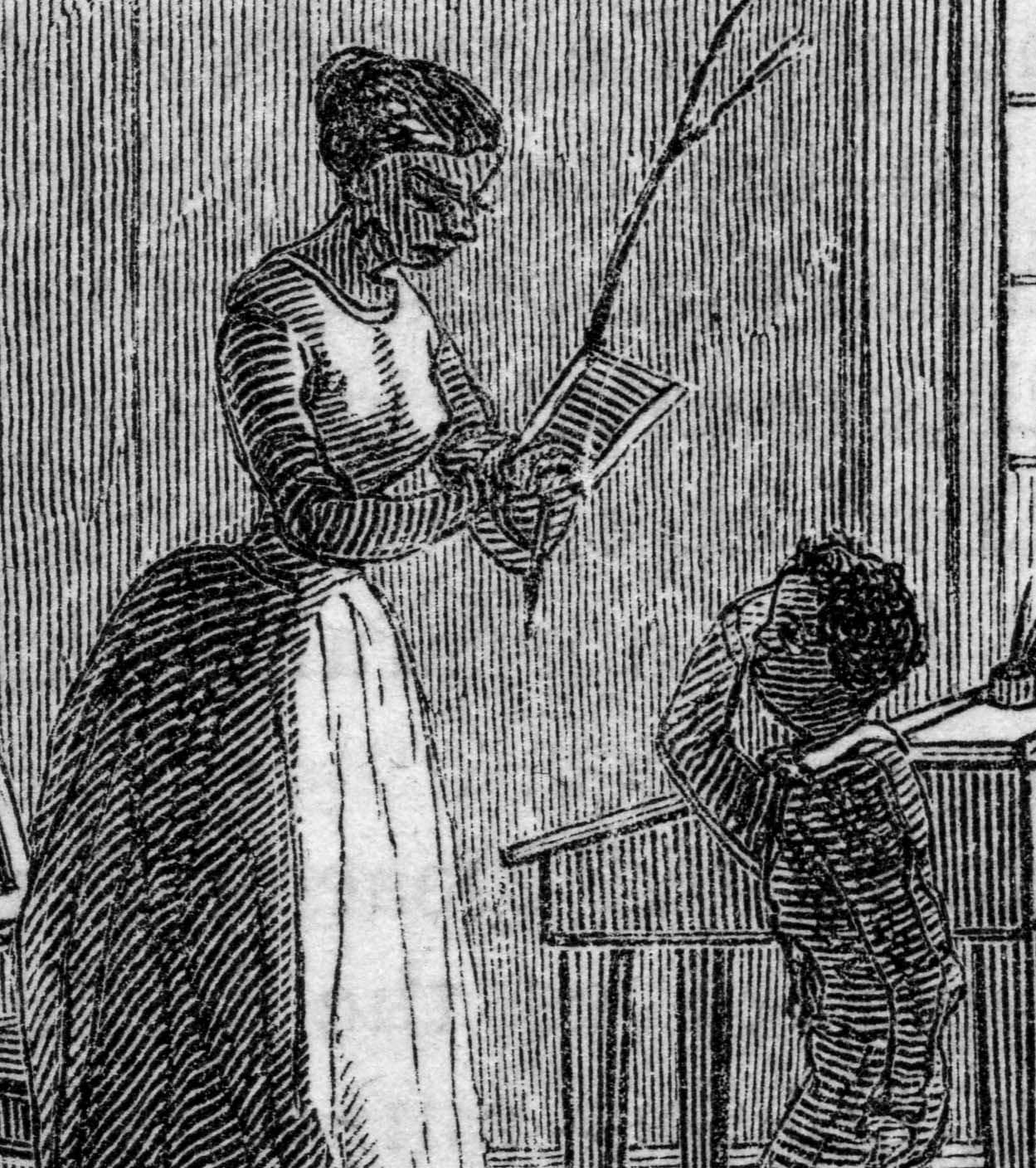Study Guide Children and Education

Table of Contents
Corporal Punishment
 One divergence between Wampanoag and Puritan views on childrearing and education involves the use of corporal punishment. While Puritans often commented on the compassion and indulgence Algonquians showed their children (Silverman 355; Williams 115-116; Gookin 149), Puritans themselves felt that “breaking the will” of children was often the kindest form of love (Silverman 365). This breaking included corporal punishment. In Massachusetts Bay and other colonies, a child who cursed or struck a parent could be put to death. While no child was ever executed under this law, corporal punishment was common both in the home and in the school (Brekus 307). Corporal Punishment was not only considered a problem by Wampanoags on the island: in 1733 John Allen (1), Esquire, made a complaint about Francis Bryan, the schoolmaster of Chilmark, for striking William Allen (2), 15 years old, “with a Large Cane or Walking Staff” (Banks DRMV 56-57).
One divergence between Wampanoag and Puritan views on childrearing and education involves the use of corporal punishment. While Puritans often commented on the compassion and indulgence Algonquians showed their children (Silverman 355; Williams 115-116; Gookin 149), Puritans themselves felt that “breaking the will” of children was often the kindest form of love (Silverman 365). This breaking included corporal punishment. In Massachusetts Bay and other colonies, a child who cursed or struck a parent could be put to death. While no child was ever executed under this law, corporal punishment was common both in the home and in the school (Brekus 307). Corporal Punishment was not only considered a problem by Wampanoags on the island: in 1733 John Allen (1), Esquire, made a complaint about Francis Bryan, the schoolmaster of Chilmark, for striking William Allen (2), 15 years old, “with a Large Cane or Walking Staff” (Banks DRMV 56-57).
The letter in the archive from Simon Athearn (1643-1714/15) provides insights into the life of young Wampanoags indentured out to whites as well as to the possible options available to them for ensuring their good treatment. The extremely irregular spelling of this letter does not reflect Athearn’s lack of education: rather it is a helpful hint about how Mr. Athearn might have pronounced English—closer to Shakespeare’s than to ours today (3). It is worth providing a bit of information about Athearn to contextualize his letter. Athearn was an important and contentious member of the early white settlement on the Vineyard who held a “long course of opposition to the Mayhews and their official of affairs on the Vineyard” (HMV II.Tisbury.25-65) Athearn’s “misbehavior” included incidents such as his poor treatment of an indentured Wampanoag boy, but also more minor grievances such as his slandering of Thomas Peat, "Skoole master of Edgartown," in a "mock verse" in his daughter Mary Athearn's "coppy boock." In spite of his apparently irascible nature, Athearn was county commissioner in 1686; constable of Tisbury in 1687; assessor in 1692; commissioner for the town (for the trial of small cases) in 1693; selectman in 1695 (Banks HMV. II.25 – 65). Simon Athearn’s tombstone lies in West Tisbury Village Cemetery located on State Road, West Tisbury.
Notes
(1) John Allen and Margaret Holmes were married March the 1st, 1715/16, and were married by William Holmes (her father) (Diary of William Homes [the elder], Loose sheet of paper in-between pp. 94-95 Banks DRMV: Chilmark).
Items Related to Corporal Punishment in the Archive
Logick Primer < Previous | Next > Children’s Conversion Narratives